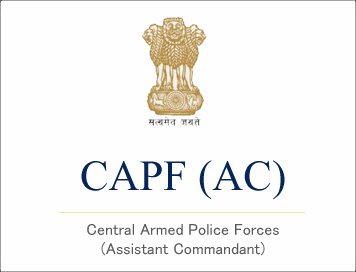केंद्रीय सशस्त्र पुलिस बल (CAPF AC) Exam Hindi Model Questions : SET-10
1. निम्न कथनों पर विचार कीजिए
1. 52वें संशोधन 1985 द्वारा संसद सदस्यों की अयोग्यताएं के बारे में वर्णन है
2. चुनाव के बाद यदि कोई स्वतंत्र सदस्य किसी दल को सदस्य बनेगा तो वह अयोग्य घोषित होगा
3. संसद में स्थान ग्रहण करने के 6 माह बाद यदि कोई नामाँकित सदस्य कोई राजनीतिक में सम्मिलित होता है तो वह अयोग्य घोषित हो जाएगा।
उपर्युक्त कथनों में सही कथन है
a. केवल 1
b. केवल 2 एवं 3
c. 1 एवं 3
d. उपर्युक्त सभी
2. निम्नलिखित कथनों पर विचार कीजिए ।
1. अयोग्यता संबंधी कानून से पहली बार राजनीतिक दलों की संवैधानिक स्थिति की पुष्टि हुई।
2. केन्द्र में प्रधानमंत्री सहित कुल मंत्रियों की संख्या लोकसभा की सदस्य संख्या क 15ः से अधिक नही हो सकती है।
उपर्युक्त कथनों में सही कथन है
a. केवल 1
b. केवल 2
c. 1 एवं 2
d. उपर्युक्त में कोई नही
3. निम्नलिखित कथनों पर विचार कीजिए ।
1. अनु2 एवं 3 के अंतर्गत 1990 में राष्ट्रपति द्वारा अन्तर्राज्यीय परिषद का गठन किया गया
2. राष्ट्रपति अन्तर्राज्यीय परिषद का अध्यक्ष होता है
3. अन्तर्राज्यीय परिषद मे गृहमंत्री सहित 6 केन्द्रीय मंत्री होते है जिनकी नियुक्ति राष्ट्रपति करता है
उपर्युक्त कथनों में सही कथन है
a. 1 एवं 3
b. केवल 1
c. केवल 1 एवं 2
d. उपर्युक्त सभी
4. क्षेत्रीय परिषद का मुख्य उद्देश्य है
1. देश का मानसिक एकीकरण करना
2. देश के विभिन्न भागों के बीच राजनीतिक संतुलन बनाना
3. सामाजिक और आर्थिक मसलो पर केन्द्र एवं राज्यों के मध्य सहयोग को बढ़ाना
उपर्युक्त कथनों में सही कथन है
a. केवल 1 एवं 3
b. केवल 1 एवं 3
c. 2 एवं 3
d. उपर्युक्त सभी
5.निम्न कथनों पर विचार कीजिए
1. उत्तर क्षेत्रीय परिषद का मुख्यालय नई दिल्ली है
2. मध्य क्षेत्रीय परिषद का मुख्यालय मध्य प्रदेश है
3. उत्तर पश्चिम क्षेत्रीय परिषद का मुख्यालय मेघालय है
उपर्युक्त कथनों में सही कथन है
a. केवल 1
b. केवल 2 एवं 3
c. केवल 1 एवं 3
d. 1, 2 एवं 3
ANS: 1(d), 2(a), 3(b), 4(d), 5(a)




